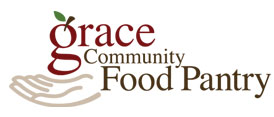
To include your event in the Briefing and Live Calendar, please fill out this form.
Weather: Patchy fog in the morning. Mostly sunny. Highs in the mid 80s. Southwest winds 5 to 10 mph. Sunday Night: Mostly cloudy with a slight chance of thunderstorms. A slight chance of showers in the evening, then a chance of showers after midnight. Lows in the mid 60s. Southwest winds 5 to 10 mph. Chance of rain 50 percent. See the daily weather briefing from the National Weather Service in Jacksonville here.
Today at a Glance:
Palm Coast Farmers’ Market at European Village: The city’s only farmers’ market is open every Sunday from noon to 4 p.m. at European Village, 101 Palm Harbor Pkwy, Palm Coast. With fruit, veggies, other goodies and live music. For Vendor Information email [email protected]
Caryl Churchill’s ‘Vinegar Tom,’ at City Repertory Theatre, 160 Cypress Point Parkway (City Marketplace, Suite B207), Palm Coast, 3 p.m. $15-$30. Book tickets here. From Director John Sbordone’s program notes: Caryl Churchill’s VINEGAR TOM, written in collaboration with the Monstrous Regiment Theatre Company, uses the hunt for witches in the 17th century, as stool to investigate the subjugation of women in a male dominated society. The lessons of the past, though more blatant than the present, are reflected in many aspects of our own society. Churchill, a leading feminist writer in Britain for over 50 years, explores the free spirited Alice, the subservient Susan, the caged in Betty, the destitute Joan and the ever helpful Ellen in the context of their repressive environment. She uses modern techniques such as the episodic scene to convey the pervasiveness of the subjugation without absorbing the audience in emotional crisis. She asks us to observe the behaviors without getting lost in their melodrama. One technique establishes these goals graphically. The songs are intended to covey a contemporary commentary on the behavior of the past. CRT is proud to present this daring exploration and thankful to Benjamin Beck for composing the compelling music to accompany our efforts.
Al-Anon Family Groups: Help and hope for families and friends of alcoholics. Meetings are every Sunday at Silver Dollar II Club, Suite 707, 2729 E Moody Blvd., Bunnell, and on zoom. More local meetings available and online too. Call 904-315-0233 or see the list of Flagler, Volusia, Putnam and St. Johns County meetings here.
 Byblos: It’s Library of America Day. Today’s delivery: Charlotte Perkins Gilman’s Novels, Stories and Poems. Gilman, like last month’s writer (whose name I have already forgotten) would have been one of those writers whose name doesn’t readily trigger extasies so much as the question: who? But then a little wallpaper begins to remind you. The yellow wallpaper, that story most of us, many of us anyway, had to read in our used thousand-page anthologies either in high school or college. That one-hit-wonder Gilman, who turns out not to be a one-hit wonder after all. It takes reissues to rediscover. Of course “The Yellow Wall-Paper” is here, not just one, but the manuscript version, too (I have not read that one yet: the dullish summary below is based on a previous reading of the standard version). She wrote a little criticism, less than two dozen stories, including one called “When I Was a Witch” and one called “If I Were a Man” (“That was what pretty little Mollie Matthewson always said when Gerald would not do what she wanted him to–which was seldom,” and with that opening line, we’re into the grip of needing to know who this wily pretty little Mollie is, and will she kill her husband in the end–for pretty little Mollie is actually wife to Gerald), a couple of novels: With Her in Our Land and Herland, plus poetry. Her collection, In This Our World groups them under three headings: “The World,” “Woman” and “The March.” The word “Gothic” appears in the first line of LOA’s brief summary of Gilman. When you Google her name, one of the top results is a drop-down menu I hope Gilman’s soul never sees through yellowed time: “Why was Charlotte Perkins Gilman important?” (Answer, dropped down: “During her lifetime, Gilman worked to promote woman suffrage, the professionalization of domestic work, and the social purity movement (which sought to abolish prostitution and establish a common “age of consent”.)
Byblos: It’s Library of America Day. Today’s delivery: Charlotte Perkins Gilman’s Novels, Stories and Poems. Gilman, like last month’s writer (whose name I have already forgotten) would have been one of those writers whose name doesn’t readily trigger extasies so much as the question: who? But then a little wallpaper begins to remind you. The yellow wallpaper, that story most of us, many of us anyway, had to read in our used thousand-page anthologies either in high school or college. That one-hit-wonder Gilman, who turns out not to be a one-hit wonder after all. It takes reissues to rediscover. Of course “The Yellow Wall-Paper” is here, not just one, but the manuscript version, too (I have not read that one yet: the dullish summary below is based on a previous reading of the standard version). She wrote a little criticism, less than two dozen stories, including one called “When I Was a Witch” and one called “If I Were a Man” (“That was what pretty little Mollie Matthewson always said when Gerald would not do what she wanted him to–which was seldom,” and with that opening line, we’re into the grip of needing to know who this wily pretty little Mollie is, and will she kill her husband in the end–for pretty little Mollie is actually wife to Gerald), a couple of novels: With Her in Our Land and Herland, plus poetry. Her collection, In This Our World groups them under three headings: “The World,” “Woman” and “The March.” The word “Gothic” appears in the first line of LOA’s brief summary of Gilman. When you Google her name, one of the top results is a drop-down menu I hope Gilman’s soul never sees through yellowed time: “Why was Charlotte Perkins Gilman important?” (Answer, dropped down: “During her lifetime, Gilman worked to promote woman suffrage, the professionalization of domestic work, and the social purity movement (which sought to abolish prostitution and establish a common “age of consent”.)
As for “The Yellow Wall-Paper,” in case you are preparing for one of E.D. Hisch’s tests about what you absolutely have to know to avoid the guillotine: John and the narrator have rented a colonial mansion, “a hereditary estate, I would say a haunted house,” where the narrator can rest from an illness her physician husband John, who “scoffs openly at any talk of things not to be left and seen and put down in figures,” does not believe she has, though he is treating her and manages her hourly prescriptions. “He is very careful and loving, and hardly lets me stir without special direction.” He is also controlling and patronizing. He doesn’t let her have the room she wished they’d taken on the first floor. “He hates to have me write a word.” All activities are discouraged. But she writes, from a room with atrocious yellow wall paper that commits “every artistic sin,” and “when you follow the lame uncertain curves for a little distance they suddenly commit suicide.” The narrator has just had a baby but was separated from it because of her illness. It’s post-partum depression to our eyes, but to her husband and the rest of her family, it’s an invention, a conceit, an indulgence, an ironic twist on the blame: it’s all in your head. Actually, it’s all in the wall-paper, which gradually becomes the narrator’s doors of perception. Gilman’s device is simple and ingenuous. The paper is a mirror to the narrator’s slow degradation as she slowly unmoors herself from John, with the occasional snide aside (“I suppose John was never nervous in his life”) while the patterns in the paper take on life, little by little as if sucking the life out of her: “There is a recurrent spot where the pattern lolls like a broken neck and two bulbous eyes stare at you upside-down.” At first the wallpaper oppresses her with its ugliness but then becomes her. The story’s obvious limitation is the coherent narration throughout: a woman losing grasp of life as she knew it would not know to write so lucidly. That suspension of disbelief is the accepted deal with Gilman. It can’t be resolved. Although we also don’t know whether this is memoir or testament–at least we’re not given hints, though we know know it’s more memoir than fiction. The wallpaper is biography, almost autobiography: “On a pattern like this, by daylight, there is a lack of sequence, a defiance of law, that is a constant irritant to a normal mind.” She supposedly improves, at least according to how she reports John reacting, but she is only degrading further, talking about burning the house, “creeping” about the room, demolishing the paper as if to free the souls within, and herself. The paper had been a reflection of her prison, her prison a reflection of her society, starting with her husband.
—P.T.
View this profile on Instagram
![]()
The Live Calendar is a compendium of local and regional political, civic and cultural events. You can input your own calendar events directly onto the site as you wish them to appear (pending approval of course). To include your event in the Live Calendar, please fill out this form.
January 2026
Free For All Fridays With Host David Ayres on WNZF
Friday Blue Forum
‘Lady Day at Emerson’s Bar and Grill,’ the Billie Holiday Story, at City Rep Theatre
Flagler Beach Farmers Market
Coffee With Flagler Beach Commission Chair Scott Spradley
Grace Community Food Pantry on Education Way
Second Saturday Plant Sale at Washington Oaks Gardens State Park
American Association of University Women (AAUW) Meeting
‘Lady Day at Emerson’s Bar and Grill,’ the Billie Holiday Story, at City Rep Theatre
For the full calendar, go here.

An aching, blinding, barren, endless plain,
Corpse-colored with white mould of alkali,
Hairy with sage-brush, slimy after rain,
Burnt with the sky’s hot scorn, and still again
Sullenly burning back against the sky.
Dull green, dull brown, dull purple, and dull gray,
The hard earth white with ages of despair,
Slow-crawling, turbid streams where dead reeds sway,
Low wall of sombre mountains far away,
And sickly steam of geysers on the air.
–From Charlotte Perkins Gilman’s In This Our World (1893).





































Pogo says
@Back in the present